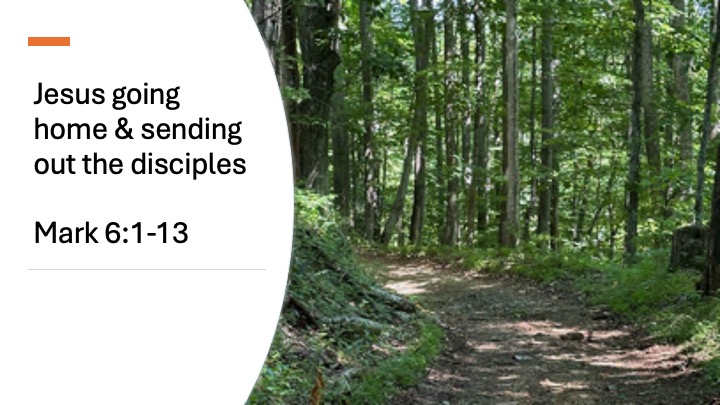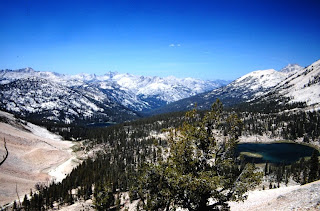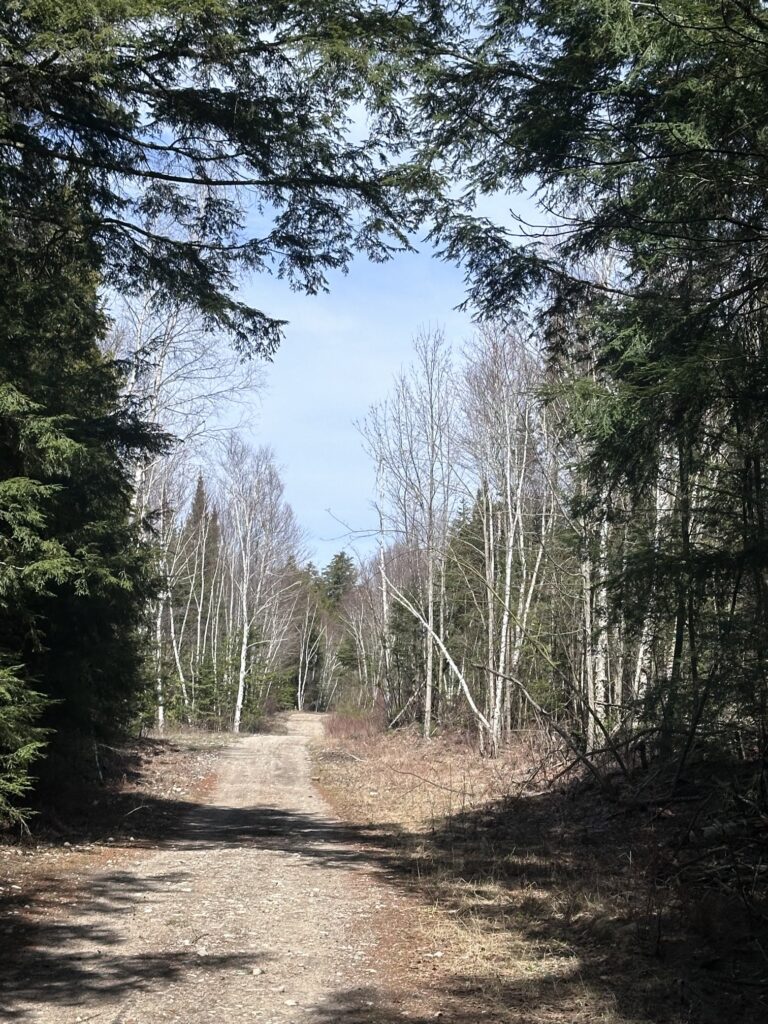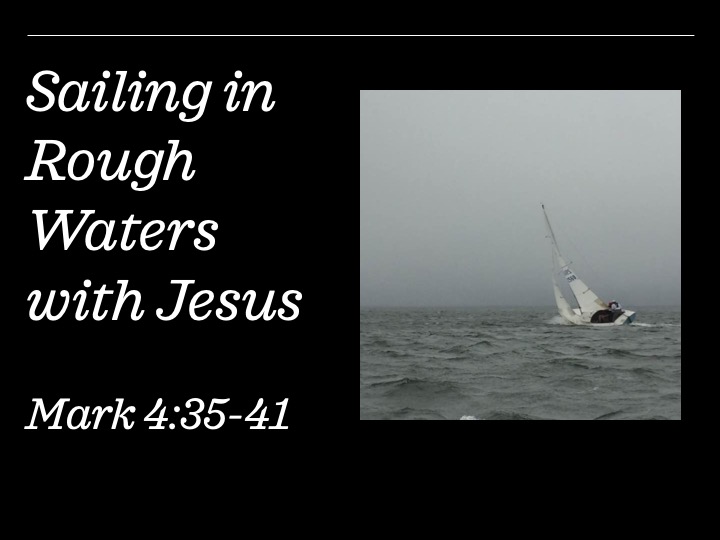
I came across this piece that I wrote in August 1999, five years before my first blog. It brought back good memories. That summer, I played the role of scoutmaster for Troop 360, chartered by Community Presbyterian Church of Cedar City, Utah. Joining me as assistant that summer was my friend, Ralph Behrens. Ralph and his wife Pat were good friends of mine in Utah, and I often stayed with them when I would return to visit Cedar City. Sadly, both have died.
We took a dozen boys that summer to camp along Bear Lake in Northern Utah. The camp week ran from Monday morning through Saturday, so we loaded up after church on Sunday. I drove a 15-passenger rental van with the scouts and Ralph followed with his pickup truck, the back of it filled with gear. We made the 330-mile drive to Logan, Utah, arriving at dusk, where we stayed overnight at the Presbyterian Church. Early Monday morning, after a stop for breakfast, we drove Highway 89 up Logan Canyon and across the mountains, before dropping down to Bear Lake. This was an incredibly beautiful drive and the lake before us as we dropped out of the mountains was so inviting. My story will pick up on our arrival at camp.
I looked for the camp and it appears that it is no longer in operation. Probably because the Mormons pulled out of the Boy Scout program, there seems to be a consolation of councils in the West and fewer camps. This camp had a lot of strikes against it as it consisted of small spit of land between the lake and the highway. However, I am sure the land was very valuable as it had so much lakeshore footage. I have edited my story slightly. I’m also sure I have a few more pictures of the camp, but am not sure which of many tubs of photos they’re in. The one of my son preparing to scuba dive was in a collection of albums and the only one from camp that summer.
Camp Bangladesh
August 1999

A lot has happened in the fifteen years since I was last in a scout camp. Back then I was the Camp Director at Camp Bud Schiele in Western North Carolina. With grounds manicured like a country club and lots of trees, it wasn’t a bad place to spend the summer. However, after eight weeks in an all-boys camp with very few females, I knew the summer was winding down when the camp cooks, who were older than my mother, started to look attractive. In order to see what improvements made to the scouting program, I signed this summer for a week at camp with our local troop. I knew a lot had changed. However, I wasn’t prepared for what I experienced, especially girl counselors.

Ralph and I and a dozen boys arrived safely at Camp Bangladesh on a Monday morning. It was supposed to be an aquatic camp, but it felt like an overpopulated refugee settlement on the eastern shore of Bear Lake in Northern Utah. Greeting us at the gate was Gilligan, looking fresh and neat from his recent cruise on the S.S. Minnow. He wore Navy khaki, we assumed, because he didn’t meet the six-foot height requirement for the Coast Guard (and would have been unable to walk ashore if his boat had sunk). Gilligan directed us to our campsite and told me to report to the pavilion and check in. On the way, I stopped at the head (euphemism for latrine), where I quickly surmised that the U.N. and International Red Cross Refugee Commissions hadn’t yet inspected this site.
At the pavilion, the powers that be lightened my wallet as Robyn gave the troop a tour of the camp. Robyn substituted for our camp friend Randy who was, we later surmised, in the bushes with a female staff member. We never saw Robyn again; some think he got lost in the sage brush. Unable to see over it, he may have traveled in circles till he passed out. As for Randy, he and the Misses showed up hand-in-hand halfway through the week. We learned then that Randy was quite a philosopher and explained all the world problems as “someone must be smoking something.” We all assumed he was the “someone.”
At the opening scoutmaster’s meeting on the first day, I qualified for the BSA’s “Safety Afloat” certification by listening to a lecture. Little did I realize the camp practiced another form of safety afloat. They kept most of their boats in dry dock. They reserved the fully functioning boats for staff use. Our troop re-christened the small sloop named the “Ark” into the “Love Boat.” They had suspicion as to what the staff did on the boat that they kept safely moored offshore and off-limits to campers.
I will forever remember the galley experience at Camp Bangladesh. They served dinner in two shifts (called watches). If you’re unlucky enough to be on the second watch, as we were, it was like eating in an emergency canteen following a Kansas tornado. Another unique experience was dining in this open-air pavilion during a thunderstorm. Paper plates and cups flew with the wind, ridding the camp of rubbish by sending it all to Idaho. I’m sure it was from such an experience that the shifts became known as a watch, for we watched our food fly away.
The day following, the camp staff must have had a knife sharpening contest. The cook took first place. That night we were treated to beef trimmings, trimmings so fine we didn’t even notice them. Even the camp’s sole vegetarian seemed satisfied. In all seriousness, the night with the gluey noodles made up for the undercooking of the previous night’s rice, things have a way of balancing out in the end. Quality aside, the real problem was with quantity and our neighboring unit leaders resorted to rattlesnake hunting to supplement their boy’s diet. Ralph and I, being more practical, took our boys for milk shakes at the ice cream stand on the south end of the lake.
Of course, what goes in must come out, which brings me back to the subject of the rotten white buildings dotting the landscape and were a contributing factor for the outbreak of constipation that struck our campers. The smell of these buildings was so bad that I stopped using flashlights and followed the stench from one to another on the path back to our site. People had reported several large skunks along the highway east of the camp . They all facing east, obviously running across the highway afraid another skunk laid claimed the territory when they meet their demise under the tires of moving vehicles.
Our troop’s strawberry blonde commissioner was Ms. Pope. We could never remember her name, so Ralph and I started calling her Hillary, in honor of the First Lady. In addition to serving as our commissioner, she was also the commandant of the dining hall and ruled with an iron fist. Hillary was an electronic engineering technician student at Weber State (MIT on the Salt Lake). We found her knowledgeable about most everything except for the difference between a foot and a yard. If she gets that confused between volts and watts, we’re afraid she may be in for a real shock.
In addition to her commissioner duties and studying electricity, Hillary is looking for a good Mormon husband who will allow her to stay home and tend to a scout troop. If Robyn hadn’t gotten himself lost in the sagebrush, they’d made a cute couple. Of course, I’m sure Hillary would have wanted Robyn to grow up a bit, but until then they’d be shoe-in winners in a Dennis the Menace and Margaret look-a-like contest. However, I secretly doubt Hillary desires a husband. She really harbors ambition to be the first female Chief Scout Executive. I just hope she doesn’t get her sights on the Presidency of the U.S. of A, or our country will never be the same.
There were three classes of staff at Camp Bangladesh. The elite, like Hillary, wore Navy uniforms and look like they just walked out of a surplus store or off the set for a remake of McHale’s Navy. The second tier wear dark green sea scout shirts and various colored pants. Our favorite in this class was Hot Legs—the blonde lifeguard with a nice tanned body fitted into a red one piece swimsuit. When on duty, she looked more like a movie star posing than a lifeguard as she stretched herself out sunning on the pier. I never saw Hot Legs without large sunglasses. She wore them even when the sun wasn’t shinning. Our boys, seeing her without the glasses one day, reported that she had a serious case of raccoon eyes and better keep them on.
The bottom rung of the staff hierarchy was the kitchen crew. Without regular uniforms, their selection was based on their lack of speed and foresight. Or maybe they were pressed into service, like the British did to our seamen before the War of 1812. If that’s the case, they’ve decided as a group that indifference is a subtle way of protest. Or, maybe they really didn’t think we wanted nor needed anything to drink with our uncooked rice until the meal was nearly over.
Speaking of drinks, choosing the beverages of one’s choice was another interesting experience. Any other camp would have put labels on the coolers, but that would be too much work for the staff of Bangladesh. We learned that the way to tell what a cooler contained was to look underneath at the color of the puddle on the floor. Since we were the only non-Mormon troop in camp, the dining hall didn’t serve coffee. Suspecting such, I brought my own stove and percolator and fixed coffee every morning. I quickly became popular and found myself having to go into town to buy more coffee midweek as all the neighboring Mormon leaders decided to forgo their prophet’s word of wisdom and have a several cups of Joe a morning with Ralph and me.

Our patch for the week informed us we’ve been on an aquatic land cruise—I supposed it’s a land cruise because most that’s where most of the boats remained. But there were some good things about the experience. First, I wasn’t in charge and could blame everything on the camp director, Captain McHale himself. Instead, I passed the hours sitting in my camp chair or laying in my hammock, reading books.
Our boys averaged three merit badges and only one fight a piece and they all eventually got to sail on the one of the few fully functioning sailboats available for campers. I even spent a wonderful afternoon on a Hobie (that was reserved for scout leaders). For an extra fee, I allowed my own son to experience the underwater world as he took a scuba diving class. Now that I’m home, I’m hoping to break my Valium addiction by the end of the year.
—
Afterwards:
Even though I put a light spin on this, from my experience of working within the Scouting program in the Southeastern part of the states, it shocked me the camp passed the Boy Scouts of America’s rigorous peer inspection program. The waterfront controls were lacking, and I spent less time in my hammock and more time playing lifeguard than I hoped.
After this experience, I‘m not sure why, but we signed up for another year. In 2000, Ralph and I took the troop to a camp in the Ponderosa pines south of Williams, Arizonia. It was one of the best run camps I’ve seen. Sadly, there was no large lake, just a pond for canoeing and a swimming pool. But the food was great. After that camp, it shocked me to learn most of the boys preferred the camp on Bear Lake. But they cherished the freedom, and the lake was a great.











































